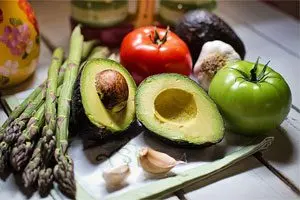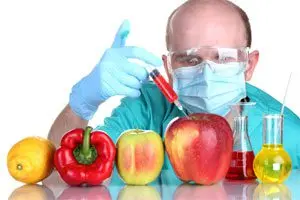Contents
In the late 80s, scientists began to grow the first GMO crops. Since then, disputes about their benefits and harm to human health have not subsided.
Some experts hold the view that GMOs (genetically modified organisms) are the greatest achievement of science. The use of genetic engineering has increased productivity, which means that hunger does not threaten humanity. Other scientists call such foods “Frankenstein food.” They are convinced that playing with nature is dangerous and can cause catastrophic consequences for all of humanity, as well as for the environment.

In order to form your own point of view on this issue, you need to dwell on the most controversial points in more detail.
What is GMO?
GMO stands for Genetically Modified Organisms. Not only low-lying foods fall under this definition. Scientists use this term to refer to all organisms whose genetic code has been artificially transformed.

Mutations can benefit the body, or they can harm it. It all depends on whether they help him in his further existence. For the most part, such mutations are neutral. They do not manifest themselves in any way, or make themselves felt by barely noticeable changes. Beneficial mutations underlie the evolution of a species. Organisms that carry deleterious mutations are either not viable or cannot reproduce. So nature protects the species from the influence of harmful factors on it.
People have been interfering in the evolution of nature for a long time, trying to give organisms the properties they need. Artificial selection has made it possible to breed many breeds of domestic animals. We have the ability to grow a variety of food and ornamental plants. If you look at it, then selection is an indirect intervention of mankind in the genetic codes of living organisms. The result of such work is new products and animals that have the necessary characteristics.
In fact, genetic modification and selection pursue a common goal – to change the type of plant or animal in order to get the result that a person needs. However, selection has certain drawbacks. After all, the appearance of a species with the necessary parameters has to wait a long time. Mutations will occur anywhere. Often breeders resort to the use of mutagens. They help organisms accumulate mutations faster.
This approach allows you to get a huge number of mutated species. Many of them will be worse than the original product. However, among the modified material, it is sometimes possible to find one that will have the specified characteristics. GMOs are another level of artificial selection.
A modified organism is an organism in which purposeful changes in the genotype have been made. If we consider this issue in relation to the food industry, then such products include those in which genes that are not characteristic of them have been introduced.
Goals of creating GMOs

GMOs have been bred to increase crop yields and improve their resistance to adverse environmental factors such as drought or nutrient deficiencies. Such plants must be resistant to pests and viruses. Scientists tried to develop crops that could be grown at minimal cost and at the same time receive high yields. Moreover, the problem of food shortages is acute in many countries.
Crop persistence and food security
Genes have been introduced into GM plants that are able to destroy weeds and harmful insects, and also help to actively resist viruses. Plants have also been created that tolerate drought better than their species counterparts. Therefore, they can be grown in those countries where there is a shortage of water.
It is no secret that a huge part of the crop dies due to diseases, parasites and viruses. The use of genetic engineering makes it possible to solve this problem.
Spraying vegetables with poisonous substances that kill insects allows you to get rid of them. However, the quality of the products suffers because of this. Statistics show that the use of GMO plants can reduce the amount of pesticides in products by 37%, and in the case of resistant insects – by 42%. [1]
Economic and environmental benefits

Some modified plants mature and grow faster. This allows you to increase the yield and income from the sale of such crops. Moreover, the price for the consumer remains at an acceptable level.
In 2014, the journal PLOS Biology published a report that GM plants had been created that had the ability to use more of their own nitrogen. This will reduce the amount of fertilizer applied. Growing these crops makes it possible to reduce soil damage and reduce the final cost of the product.
Obtaining economic and environmental benefits is another goal pursued by scientists involved in the development of GM plants. As practice shows, GMO products are more productive by 21%.
Improving nutrition
Genetic modification of products can increase their nutritional value. The use of these technologies makes it possible to enrich plants with proteins, vitamins and minerals. This is especially true in underdeveloped countries where people cannot afford a balanced menu.
Genetic modification makes it possible to solve the problem of hunger. For example, rice enriched with vitamin A will save a huge number of people from the deficiency of this substance.

Rice enriched with beta-carotene originated in Switzerland. It is called “golden rice”. Its beneficial properties have been enhanced by narcissus transgenes. Eating fortified rice is especially important for residents of Asian countries. It is there that many people have a deficiency of vitamin A. 100 g of the enriched product contains beta-carotene, which by 120% allows you to satisfy the daily need for it in an adult.
Long shelf life
Modified foods last longer than regular foods. They can be easily transported over long distances.
6 myths about GMOs

According to the WHO, GMO products “do not pose a risk to human health.” Scientists who are critical of this point of view object that the studies cannot be called complete, since they were not carried out for a long time. Irreversible side effects may develop in the future. When exactly is impossible to predict.
Concerns that people have about eating GMOs:
GMOs cannot be called safe, since any interference with the gene structure leads to irreversible mutations. However, in any living organism, these mutations occur regularly and without any external influence. Therefore, a claim that relates to GMOs can be made to any product: grown in a garden, in a country house, during selection on a farm, etc. Mutations are not a reason for refusing GM products.
In over 20 years on the market, GMOs have not caused or contributed to a single disease or death. In the spring of 2016, the National Academies of Sciences, Engineering and Medicine (NAS) investigated the safety issue of GMOs and concluded that GMOs are safe. Their study found that “there is no significant evidence of differences in human health risks between currently available commercially available genetically modified crops and conventionally grown crops.” [2]
GMOs cause cancer. This statement has no scientific basis. These rumors are spread by uneducated people. There has not yet been a single case where the use of modified foods would provoke the development of a cancerous tumor. On the contrary, there are scientific works that prove that the use of GMO products in food does not lead to the development of cancer. From time to time, information pops up in the media that rodents that ate foods that have undergone modification suffered from one disease or another. In fact, it is impossible to verify the purity of such experiments. Especially for ordinary people. Most often, such studies were carried out with serious violations. One can cite as an example the work of the French biologist Séralini, which received wide publicity. The scientist fed modified corn to laboratory rats and claimed that because of this, they developed cancerous tumors.
However, later it turned out that he did not conduct statistical analysis in his work. When it was done, it was possible to establish that the differences in the health of rats eating modified corn are random. With the same frequency, rodents that ate ordinary food suffer from cancer. [3]
GMOs are developed by corporations for the purpose of their own enrichment, and not for the benefit of ordinary farmers and consumers. It is pointless to argue that GMOs increase profits. Otherwise, no one would engage in and finance their development. However, we must not forget how much income products with the inscription “organic” bring. No modern technologies were applied in their cultivation. Such products cost 10-40% more than conventional ones. Moreover, inflated myths and consumer fears about the dangers of genetic modification make a significant contribution to the price increase. Large corporations earn equally from both GMOs and the organic industry.
The human body can be “infected” with DNA from modified food. Any food (GMO and conventional), once in the body, breaks down in the stomach and intestines. They are divided into amino acids, triglycerides, sugars and fatty acids. If, after eating food, their DNA could be integrated into our genome, then after each eating a banana, a person would turn yellow, and after eating cucumbers, he would become green. People have always eaten food containing foreign DNA, but did not acquire the properties of food.
GMOs are dangerous for insects. It cannot be ruled out that the cultivation of modified crops may have a negative impact on the number of some insects. However, even reputable journals have not published a single fact that would confirm this theory. Periodically, news of such a plan pops up, but after a certain period of time, a refuting publication always comes out. And for some reason, the hype around the refutation made is not satisfactory.
GM plants become infertile after 1 or 2 generations. It really is. This was not done by chance, but to ensure that modified organisms do not get into the wild. Eating GMOs does not cause infertility in humans. Moreover, GM infertile plants were obtained from the same infertile seeds (F1 hybrids). They grow better than their parents, bring a good harvest, but do not give offspring themselves.
Is natural always useful?

There is an opinion that organic food is a source of health and longevity. Many people believe that farmers do not use any pesticides or fertilizers to produce their crops. However, this is a profound misconception. If you look at the European regulation, which is considered the most stringent in the world, even it allows the use of 30 pesticides and fertilizers. If the agrarians would not cultivate their fields in any way, then their products would cost not 3, but 40 times more.
Numerous cases of poisoning by organic products are known. And people suffer massively from them. Intestinal infections lead to the death of patients around the world. They are caused by natural pathogenic flora, for example, Escherichia coli or Salmonella. While not a single person died from the “most dangerous GMOs”.
The phobia of GMOs (chemophobia) is gaining momentum every year. It is fueled by fear of the unknown, lack of sufficient knowledge and critical thinking. Everything that people produce on an industrial scale is initially considered harmful. While organic products attract with their “usefulness”. They act as a powerful counterbalance to “chemistry”.
The apple is considered one of the safest fruits. However, the “E” in it is even more:

GMO safety
Since the creation of the first GMO, scientists have begun to evaluate all the possible risks that they are capable of inflicting on humanity. The American Academies of Sciences organized a large-scale study. It includes over 900 scientific papers that have been published over the past 30 years. All these studies pursued a common goal – to evaluate the impact of GMOs on humans.
The work was analyzed by 50 scientists of various specialists. The papers were reviewed by 26 independent experts. All of them came to the conclusion that GMOs do not cause any harm to the human body.[4]
Here are excerpts from the publication, which was posted on the WHO website.
All GM products that are now on sale have been fully tested and do not pose any harm to human health. No negative effects have been found after eating such food by people in countries where it is allowed.
GMOs in Russia today

Starting from July 4, 2016, Federal Law No. 358-F3 “On Amendments to Certain Legislative Acts of the Russian Federation in Part of Improving State Regulation in the Field of Genetic Engineering Activities” came into force. [6]
This law tightened the use of genetic engineering in food production, crop production and animal breeding. However, such products may be created for the purpose of selling to other countries.
The legislation of the Russian Federation prohibits:
Grow modified plants and breed animals to produce food.
Import seeds of modified plants into the country.
Import modified products.
The law allows:
Sell GM foods unless prohibited.
Use GMOs for scientific research.
Crops that can be used in Russia: corn, soybeans, rice from Monsanto (Bayer), BASF, Bayer CropScience, Pioneer Hi-Bred. GM raw materials are used for the manufacture of meat products, canned food, bread, and confectionery.
Modified soybeans and corn from the listed producers are imported into Russia and used as animal feed. To date, about 300 brands have been registered. For example, many calves now receive soy instead of cow’s milk.
In Russia, scientists are conducting research and development to create GM plants. The most famous laboratory is Biotron, which is located in Pushchino in the Moscow region. Scientists have created plants that are resistant to viruses and chemicals. Their developments include tomatoes with a long shelf life.
The group of genetic engineering and plant genome editing of the Institute of Developmental Biology of the Russian Academy of Sciences named after N.K. Koltsov is working in Moscow. In this laboratory, a transgenic sunflower was created, which is used to produce rubber.
On the basis of the Institute of Plants. A. K. Timiryazev RAS conducts its own fundamental research on transgenic tobacco, potatoes, rapeseed and Arabidopsis (this is a wild relative of cabbage).
There are other centers in the country involved in the creation of GM products.
Scientific lecture explaining the safety of eating GMOs:









